Engaging Tens and Ones Activities for Young Minds


Intro
Understanding the concepts of tens and ones forms the very bedrock of numeracy for young learners. Grasping these ideas not only enables students to handle numbers with confidence, but it also aids them in developing mental math skills that will serve them well throughout their academic journey and beyond. In this exploration, we’ll shine a light on a set of dynamic activities designed to engage elementary school students with the core ideas of place value while keeping the learning process lively and enjoyable.
As we proceed, we will delve into creative projects that facilitate hands-on experiences, quizzes that reinforce knowledge, and articles that provide in-depth insights into the subject matter. These activities aim to ensure that each child, armed with the right tools and guidance, can navigate the world of numbers with ease.
Let’s roll up our sleeves and dive into the creative activities that promise to bring tens and ones to life for our young learners.
Understanding the Basics of Place Value
Understanding place value is akin to holding a key that unlocks the door to the world of mathematics for young learners. It lays down the foundation for all future numerical concepts that children will encounter, from simple addition and subtraction to the complexities of multiplication and division. For learners, grasping the idea of tens and ones not only aids in arithmetic but also helps them understand larger numbers and how they function in different contexts.
Place value is essentially about recognizing that the position of a digit in a number determines its overall value. For instance, the number 23 consists of 2 in the tens place, which signifies it's 20, and 3 in the ones place, signifying it's simply 3. This notation enhances their comprehension of larger numbers beyond mere memorization; rather, it opens their eyes to the relationships between digits.
Defining Tens and Ones
Tens and ones are the building blocks that create our understanding of two-digit numbers. When we speak about ones, we refer to the individual units—this can mean a single apple, one car, or just one of anything. Tens, on the other hand, represent groups of ten. Imagine ten little blocks stacked together, forming a single cohesive unit. Together, these units make subsequent numerical learning much easier for children.
To illustrate, consider the number 45. Here, there are four tens, which means four groups of ten, equating to 40, and five ones, which simply adds to five. So, in essence, we can explain ten to one as a system of counting and grouping—turning simple quantities into something more manageable. Children can visualize this through tactile methods, like moving physical counters or blocks, thereby cementing their understanding of these basic components.
The Importance of Place Value
In the realm of mathematics, understanding place value is not just a necessary skill but an essential one that supports further mathematical reasoning. Often, we encounter students who may be adept at simple calculations yet struggle with more advanced problem-solving. This lag can often be traced back to a shaky grasp of place value.
Some of the benefits of a solid understanding of place value include:
- Simplifies Calculations: Knowledge of tens and ones allows students to break down larger numbers into manageable parts.
- Foundation for More Complex Concepts: A strong grasp aids in learning about hundreds, thousands, and beyond.
- Real-World Applications: Understanding how to group and count helps in financial literacy and everyday math situations such as shopping.
"Mastering the concept of tens and ones not only enhances students' numerical skills but also builds their confidence to tackle complex math problems later on."
It's clear that by equipping children with this foundational knowledge early on, teachers and caregivers can set them up for success in their future academic pursuits. The importance of instilling a clear understanding of these concepts cannot be overstated. It fuels not just math proficiency but lays the groundwork for critical thinking skills necessary for everyday life.
The Role of Activities in Learning
Activities form the backbone of effective learning experiences for young learners. In the context of mathematics, especially when delving into the concepts of tens and ones, thoughtfully designed activities can effectively build a solid foundation for children’s numeracy skills. These activities encourage not just comprehension but also retention of fundamental ideas. They turn abstract concepts into tangible experiences, enhancing both understanding and engagement.
When children actively participate in their learning through hands-on experiences, they are often more motivated and curious. This approach allows them to explore mathematical concepts at their own pace, facilitating a deeper, more personal connection to the subject matter. In classrooms where teacher-led instruction predominates, students may find themselves passive recipients of information. However, injecting an array of interactive activities fosters a dynamic learning environment. This not only keeps students attentive but also enables them to relate mathematical principles to real-world scenarios, illuminating the relevance of tens and ones in their daily lives.
Engaging Children with Mathematics
Engaging children with mathematics involves much more than simply presenting numbers on a page. It requires immersion in activities that grab their attention and inspire a sense of curiosity. For instance, using manipulatives such as blocks or counters can provide a visual and tactile means of understanding the separation between tens and ones. Instead of just memorizing definitions or formulas, children can physically manipulate these objects to build numbers, creating a connection to the mathematical concepts at hand.
Consider an example where students are tasked with building towers using ten blocks stacked together for each ten and single blocks for the ones. This kind of tangible interaction allows them to see the difference between, let’s say, 27 and 72, breaking down the concepts and making them accessible.
Another approach is to integrate storytelling into math activities. Crafting narratives around numbers can help children internalize concepts while also making the learning experience enjoyable. A story about a character who has to count their tens and ones can work wonders in helping the child visualize the importance of place value.
Benefits of Hands-On Learning
Hands-on learning extends beyond mere engagement; it holds a wealth of benefits that align closely with how young children learn best. One major advantage is that it promotes active participation, which is pivotal for retaining information. When a child physically engages with the learning material, it can leave a more profound impact than listening to a lecture or reading a workbook.
Some benefits of hands-on learning include:
- Enhanced Understanding: Manipulating objects provides visual aids that clarify abstract concepts. Children often grasp them more easily through action.
- Motivated Learners: When children feel ownership of their learning through exploration, their intrinsic motivation skyrockets.
- Collaboration Skills: Activities often encourage teamwork, which helps children learn to communicate and collaborate effectively.
- Critical Thinking: Engaging in hands-on activities pushes children to think critically as they must often solve problems in real-time.
In summary, the role of activities in learning—especially in mathematics—is not to be underestimated. They form a bridge between opportunity and understanding, transforming the teaching of tens and ones into an interactive adventure for young learners. Such a rich tapestry of experiences ensures that the foundational skills formed are robust and conducive to future mathematical endeavors.
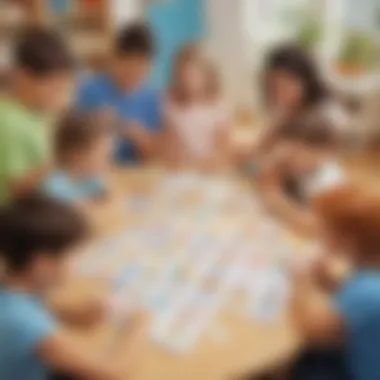
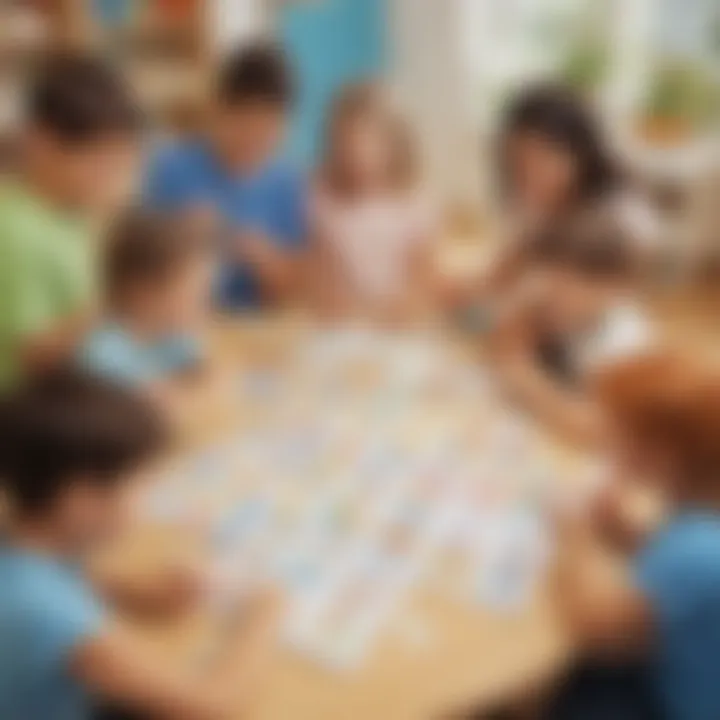
Types of Tens and Ones Activities
When it comes to teaching young learners about the intricacies of tens and ones, activities play a pivotal role. Engaging and interactive experiences not only capture children's interest but also help solidify their understanding of place value concepts. This section delves into various types of activities that can elevate the learning experience. The focus is on practical, creative, and innovative methods that make learning math both enjoyable and meaningful.
Manipulative-Based Activities
Using physical objects, or manipulatives, allows children to see and touch what they are learning about. It gives a concrete sense of what numbers represent and how they can be composed or decomposed. For instance, employing base ten blocks helps students visualize the difference between one unit and ten units, effectively making the abstract concept more tangible.
A few ideas for manipulative-based activities:
- Base Ten Blocks: Children can build numbers using blue (ones) and yellow (tens) blocks. This hands-on approach encourages exploration and fosters a deeper grasp of how numbers work.
- Counting Coins: Using pennies and dimes can introduce learners to the idea of tens and ones while also integrating real-world scenarios. It helps them see the value of each coin and relate it back to place value.
- Stringing Beads: Have kids create bracelets with beads, where each bead signifies one and a full strand signifies ten. It allows for creativity while providing numeric lessons. This becomes a fun and fashionable approach to math learning.
"A child’s mind is like a sponge; it absorbs the lessons it finds engaging and entertaining."
Digital Tools and Resources
In today’s tech-savvy world, incorporating digital resources is crucial. Various educational software and web applications can enhance learning by offering interactive experiences that captivate young minds. Digital platforms can make abstract concepts vastly more accessible through animated visuals and interactive challenges.
Some effective tools include:
- Math Learning Apps: Programs like Khan Academy Kids or SplashLearn offer interactive exercises that focus specifically on numbers and place value. They often combine fun visuals with educational content.
- Online Games: Websites like ABCya or Cool Math offer games that encourage understanding of tens and ones through gameplay, making learning feel less like a chore and more like an adventure.
- Virtual Manipulatives: Resources such as the National Library of Virtual Manipulatives provide digital base ten blocks and other tools that students can manipulate online, giving them freedom to explore numbers without any physical mess.
Creative Arts Integration
Art can be an exceptional approach to teaching math concepts. By marrying creative expression with mathematics, children can engage their imaginations while grasping fundamental ideas. This not only reinforces learning but also enhances retention through multi-sensory experiences.
Consider these activities that blend art with place value:
- Place Value Collages: Have students create collages that represent different numbers using cut-out pictures or drawings. They would need to think critically about how many tens and how many ones each collage should depict.
- Musical Numbers: Create a rhythm or song that incorporates counting by tens and ones, making it memorable. Singing and clapping along reinforces learning while being playful.
- Storytelling with Numbers: Encourage children to write a short story that integrates numbers, such as making up a tale about ten marbles and one marble. This nurtures creativity while honing their understanding of number relationships.
In summary, integrating a variety of tens and ones activities not only maintains children's engagement but also fosters a deeper, more meaningful understanding of mathematical concepts. It's all about creating a rich tapestry of learning experiences that cater to various interests and learning styles.
Practical Examples of Tens and Ones Activities
When it comes to teaching young learners about math, hands-on activities are often the most effective. Practical examples of tens and ones activities provide kids with tangible experiences that help them grasp abstract concepts. The engagement that comes with these activities makes learning not just effective, but enjoyable. Through these methods, students can visualize numbers in a way that is clearer and more relatable.
Building Numbers with Blocks
Using blocks to build numbers is an excellent way for children to understand how tens and ones operate. You can use simple materials like Lego bricks or counting cubes. For instance, if you give children ten blocks of the same color, that represents one group of ten. Then, add individual blocks of a different color to signify ones. Seeing how 10 and 1 combine to form numbers like 11, 12, or even 21 helps children visualize place value in an interactive way.
- Benefits: Children develop fine motor skills while manipulating blocks, and they also get a better sense of quantity.
- Considerations: Be prepared for a bit of chaos! Blocks tend to end up scattered, which is an opportunity for kids to practice organization.
Using Worksheets and Puzzles
Worksheets and puzzles can be wonderful supplements to hands-on activities. They offer a structured way for children to practice what they have learned. For instance, you might have a worksheet that asks children to fill in the missing numbers in a sequence or match numbers to the correct tens and ones groupings.
"Worksheets may seem straightforward, but they can reinforce concepts learned during more interactive activities."
Children find satisfaction in solving puzzles, which makes learning place value seem like a game. To up the anty, you can even create a fun competition among students to complete the materials faster.
- Benefits: Enhances problem-solving skills and boosts confidence when they achieve correct answers.
- Considerations: The key here is to balance fun and learning; make sure the puzzles don't frustrate the children.
DIY Place Value Games
Creating do-it-yourself games is an entertaining way to reinforce tens and ones understanding. Parents and educators can craft games using everyday household items. For example, you might use cards to create a bingo game based on place value.
- Provide each child with a bingo card filled with numbers.
- Call out different two-digit numbers, and the children will mark the corresponding tens and ones.
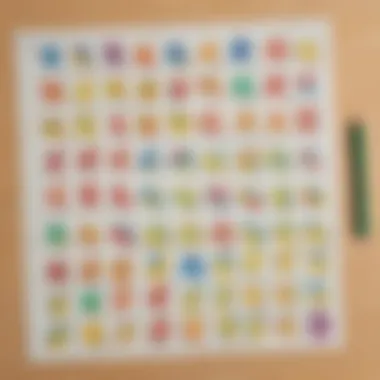
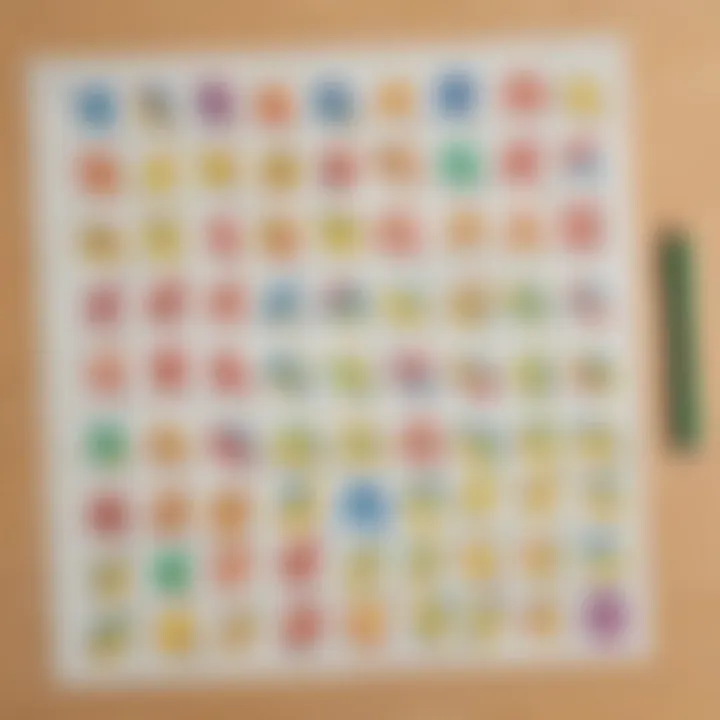
This game can be played in teams, which adds a layer of collaboration and excitement.
- Benefits: Encourages teamwork and critical thinking as children strategize on how to mark their cards.
- Considerations: Make sure to explain the rules clearly so every child understands how to play.
By integrating these practical examples, you’re equipping young learners with the necessary tools to understand tens and ones in a way that’s both meaningful and fun.
Effective Teaching Strategies
Effective teaching strategies are critical when it comes to developing a solid understanding of tens and ones among young learners. By employing tailored methodologies, educators can facilitate a more engaging and fruitful learning experience. These strategies ensure that students not only grasp basic concepts but also develop a deeper appreciation for mathematics as a whole. The key elements encompass fostering a positive learning environment and encouraging collaboration among learners.
Fostering a Positive Learning Environment
Creating a positive learning environment is like laying the foundation of a sturdy house. It's about setting the stage where students feel safe, valued, and eager to participate. When children are at ease, their willingness to explore and ask questions dramatically increases.
- Building Trust: A teacher's supportive manner can make all the difference. Singing praises for effort, no matter how small, helps children build confidence. Recognizing achievements, be it big or small, transforms the classroom into a space where every child feels like a star.
- Encouraging Risk-Taking: It's crucial to let learners know that making mistakes is part of the learning journey. Presenting challenges, such as fun activities where students may stumble, removes the fear of failure. This atmosphere nurtures curiosity and encourages experimentation, critical components in mastering tens and ones.
- Inclusivity Matters: Having a mix of backgrounds and capabilities in teaching moments can enhance understanding. Incorporating diverse examples allows children to see the relevance of tens and ones in their lives. Think of it this way—math is everywhere, from buying toys to sharing snacks.
"A positive classroom is not just about the decor; it’s about the emotional climate where every child can soar."
Encouraging Collaboration Among Learners
Engaging students in collaborative activities is like planting seeds in a garden. As they work together, they foster deeper connections and an understanding of tens and ones that might not bloom in traditional classroom settings.
- Group Learning: Assigning tasks that require teamwork allows students to discuss and explore concepts collectively. For instance, in a group setting, learners can use blocks to create numbers, discussing with peers how many tens and ones make up their creations.
- Peer Teaching: When students explain concepts to one another, it reinforces their knowledge. A student comfortably explaining how to group tens and ones to a classmate not only solidifies their understanding but fosters valuable communication skills.
- Fun Games: Incorporating games that require teamwork can enhance engagement. Try setting up a place value scavenger hunt, where learners work in pairs to find objects in the classroom that represent tens or ones. This not only reinforces the material but allows for shared experiences and learning together.
In short, effective teaching strategies focused on a positive environment and collaborative learning can unlock a treasure trove of understanding in tens and ones. By nurturing these methods, educators pave the way for young learners to become confident in their mathematical abilities.
Measuring Learning Outcomes
Measuring learning outcomes plays a vital role in education, especially when it comes to understanding mathematical concepts like tens and ones. It helps educators determine whether students have grasped these critical ideas and whether the activities used have been effective. Furthermore, focusing on these outcomes allows teachers, parents, and caregivers to identify areas where young learners might be struggling and adjust their methods accordingly. If children understand the concept of place value, they lay a strong foundation for future mathematical success. When students master the understanding of tens and ones, they become more confident and comfortable tackling progressively challenging topics.
Assessment Techniques for Tens and Ones Understanding
Assessing learning in the context of tens and ones can be as simple as using varied, age-appropriate tools and techniques. Here are some effective assessment strategies to consider:
- Observational Assessment: Teachers can watch how students interact with manipulatives. Noticing how a child groups blocks into tens and singles can provide insights into their comprehension.
- Formative Assessments: Quick, informal assessments like exit tickets can gauge how well students are grasping the day’s material. For example, asking them to write down one way to make the number 23 using tens and ones encourages reflection.
- One-on-One Interviews: Speaking directly with students about their thought processes often reveals their understanding levels and misconceptions.
- Digital Assessments: Tools like interactive quizzes integrate technology into the assessment process and can offer instant feedback to learners.
Using a mixture of these assessment techniques ensures a well-rounded approach to understanding how effectively children are learning to identify and use tens and ones.
Feedback and Adjustments to Activities
Feedback is crucial for student growth, especially in early learning stages. After assessing how well students understand the concepts of tens and ones, it becomes essential to provide constructive feedback. Here are several strategies:
- Immediate Feedback: Providing instant feedback during activities helps learners correct mistakes right away and encourages them to stay engaged. This could be as simple as giving a thumbs-up or gentle correction when a mistake is made.
- Positive Reinforcement: Recognizing effort matters. When students do well, celebrating their achievements, even with a simple “Well done!” or a sticker, can boost their morale.
- Tailored Adjustments: If several students struggle with a concept, revisiting that lesson with a different angle could benefit the whole class. Maybe using storytelling or art to discuss tens and ones would help make the lesson click.
Adjustments based on feedback ensure that activities remain relevant and effective, catering to the needs of all learners.
In summary, effective measuring of learning outcomes not only provides valuable information about young learners’ grasp of tens and ones but also guides the necessary adjustments to teaching strategies. Engaging students in an ongoing dialogue about their learning through feedback creates a more enriching environment where students can flourish.
Incorporating Technology in Learning Activities
In today’s world, technology plays a pivotal role in education, especially for younger learners. Integrating technology into lessons about tens and ones not only makes learning more engaging but also aligns with the interests of children who are often fascinated by digital tools. Educational technology enriches the learning experience by offering interactive and adaptable resources that help maintain students' attention.
It's important to choose the right tools that match the learning objectives. Many applications and platforms provide games and exercises specifically designed to reinforce concepts of place value. Using tablets or computers can bolster a student's grasp of tens and ones in a way that traditional methods might not achieve. This avenue allows for diverse learning styles, catering to visual and auditory learners, enhancing their experience in understanding these foundational math concepts.
Educational Software and Applications
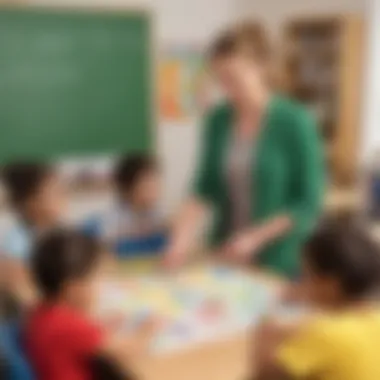
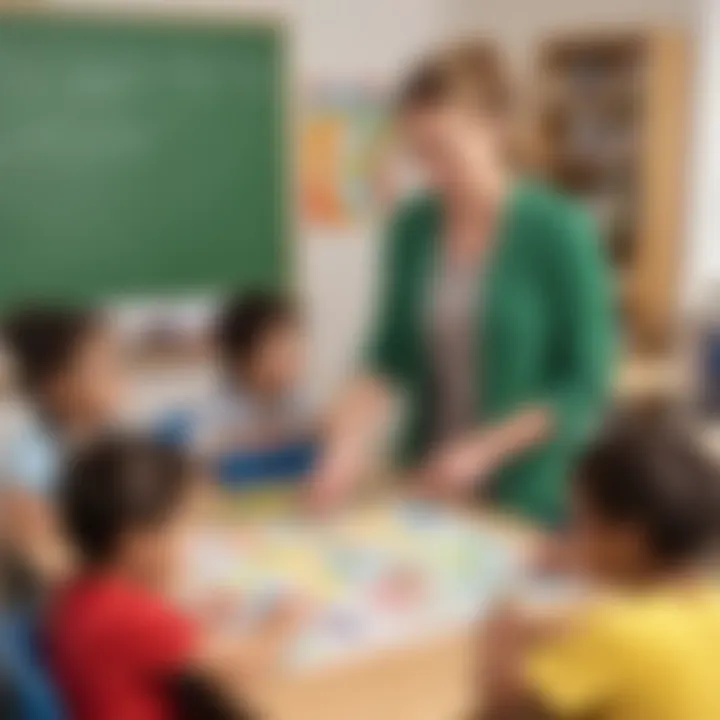
When it comes to software, there’s a whole treasure trove of options available for educators and parents. For instance, apps like Khan Academy Kids and SplashLearn offer comprehensive resources tailored exclusively towards elementary level mathematics. These platforms provide interactive lessons that focus on tens and ones, employing visuals and sound to grab the impressionable minds of young learners.
Benefits of using educational software include:
- Adaptability: Software often allows for adjustments based on the child’s proficiency level, ensuring they are challenged but not overwhelmed.
- Immediate Feedback: Many applications provide instant responses to quizzes or problems, which helps in identifying areas of difficulty quickly.
- Progress Tracking: Certain platforms have dashboards that show learning progress over time, proving useful for teachers and parents alike.
Interactive Games Enhancing Understanding
Interactive games take the learning process a notch higher. Games like Tens and Ones Arcade on platforms like ABCmouse focus on making learning fun by incorporating playful elements that help solidify the understanding of place value. Activities that involve competition or leveling up can give students a sense of achievement. When children are actively engaged, they tend to retain information better.
To illustrate, consider a game where kids can build towers using blocks to represent tens and single ones. They could score points for correctly stacking the blocks in the right order to make a given number. This not only teaches them about composition of numbers but also gives them a visual representation of place value.
"Learning through play not only makes the experience enjoyable but also deepens student comprehension."
Summary
Incorporating technology in learning about tens and ones opens up a new world of possibilities. The flexibility offered by educational software along with the spirited nature of interactive games creates a rich environment for young learners. Parents and educators should explore these options to create a rounded learning experience that helps children grasp these important mathematical concepts efficiently and joyfully.
Cultural Perspectives on Mathematics Learning
Understanding mathematics goes beyond mere numbers and operations; it’s intricately woven into the cultural fabric of societies. When it comes to teaching young learners about tens and ones, recognizing the cultural influences on mathematics education can transform learning experiences. Teachers and caregivers can tap into students' backgrounds and lived experiences to make mathematical concepts more relatable and relevant.
Tens and Ones in Diverse Educational Contexts
Mathematics is not universally taught the same way across the globe. For instance, in some cultures, the emphasis may be on collaborative learning, where students work together to solve problems, while in others, the focus may lean towards individual achievement. Teachers should acknowledge these differences in their pedagogical approaches to teaching place value.
- Cultural Variations: In certain societies, children learn number systems in relation to everyday life experiences. A child from an agrarian background might approach counting in ways linked to farming, while an urban child may connect numbers with city life.
- Native Languages: Some cultures have number systems embedded within their native languages that can either simplify or complicate the concept of tens and ones. For example, languages that use base-10 terms consistently can aid in grasping the idea of tens and ones more easily compared to those that do not.
"Every child is a product of their culture, and understanding that can lead to more effective teaching methods."
By incorporating activities that resonate with various cultural backgrounds, educators can create a more inclusive classroom environment that respects and values all students.
How Culture Influences Learning Approaches
Culture significantly impacts how children perceive and engage with mathematics. The context in which they learn can dictate not just their comprehension but their attitudes towards subjects.
- Cognitive Styles: Different cultures promote distinct ways of thinking and problem-solving. In some cultures, children might be encouraged to think outside the box, leading to innovative approaches in manipulating numbers, while others might focus on mastering rote facts before exploring applications.
- Parental Involvement: In cultures where parental engagement in education is high, children may show greater interest and effort in learning math, thus motivating them to dive deeper into concepts like tens and ones. Parental attitudes towards math can shape how children approach the subject themselves.
- Teaching Techniques: Certain educational settings might emphasize more visual and auditory learning styles, while others may prefer kinesthetic learning. Activities that engage multiple senses can enhance understanding and retention among young learners.
By developing a curriculum that is sensitive to these cultural considerations, educators can significantly improve students' grasp of mathematics, particularly in understanding vital concepts like tens and ones. Such practices create a holistic learning environment that not only addresses mathematical skills but also fosters respect for diverse backgrounds.
Challenges and Solutions in Teaching Tens and Ones
Teaching young learners about tens and ones isn't always a walk in the park. Every child comes with a unique way of learning, and this diversity can present challenges for educators. Understanding these obstacles is crucial, as it paves the way to tailored solutions that help reinforce the concept of place value. A firm grasp of tens and ones lays down the foundations for more complex math skills later on.
In the realm of elementary education, teachers often face misconceptions surrounding the concept of place value. Misconceptions can arise from a range of factors including limited exposure to hands-on activities or reliance on rote memorization. In a classroom setting, some students struggle to relate the numbers they see on paper to physical quantities. This disconnect can create frustration for both students and teachers alike.
Common Misconceptions in Understanding Place Value
One of the major misconceptions that crops up is the idea that the digits in a number are all equal, regardless of their position. For instance, a child might see the number 23 and believe that it consists of two '2's and three '3's, not understanding that the first '2' represents two tens, while the '3' signifies three ones.
Another common misconception is around the concept of zero in the place value system. Students may think that zero has no value when, in fact, it plays a pivotal role in indicating the absence of a quantity in a specific place. For example, in the number 103, the zero shows that there are no tens, which greatly influences its value.
It’s vital to address these misconceptions early, as they can lead to larger gaps in understanding as students progress in mathematics. A foundational confusion around place value might manifest in difficulties with addition, subtraction, and ultimately, problem-solving.
Strategies to Overcome Learning Barriers
To help students navigate these misconceptions and barriers, specific strategies can be employed. These methods aim to enhance comprehension and ensure students can visualize the concepts clearly.
- Use Manipulatives: Physical objects, like blocks or counters, can make a world of difference. When students can physically group and compare tens and ones, it engages them and transforms abstract numbers into tangible experiences.
- Visual Representation: Drawing diagrams or using place value charts can solidify understanding. When students can see the connections between the digits and their actual values, learning becomes more organic.
- Incorporate Storytelling: Introducing stories that incorporate numbers can render the learning experience relatable. Children often connect well with narratives and using them to frame math problems can spark interest.
- Collaborative Activities: Learning in pairs or small groups allows students to discuss their thought processes. This interaction does not only reinforce their understanding but also offers them diverse perspectives on the same concept.
- Regular Assessment and Feedback: Observing students during activities and providing instant feedback helps to catch misconceptions early. Adjusting teaching strategies based on these observations allows for a more tailored approach to each child’s learning journey.
Addressing challenges in teaching tens and ones requires a thoughtful engagement with student needs, ensuring they not only comprehend the concepts but can apply them confidently in various math scenarios.
Incorporating these strategies fosters a more inclusive, effective learning environment enabling young learners to develop a solid understanding of tens and ones. Acknowledging the challenges while providing robust solutions can create a roadmap to successful numeracy education.







